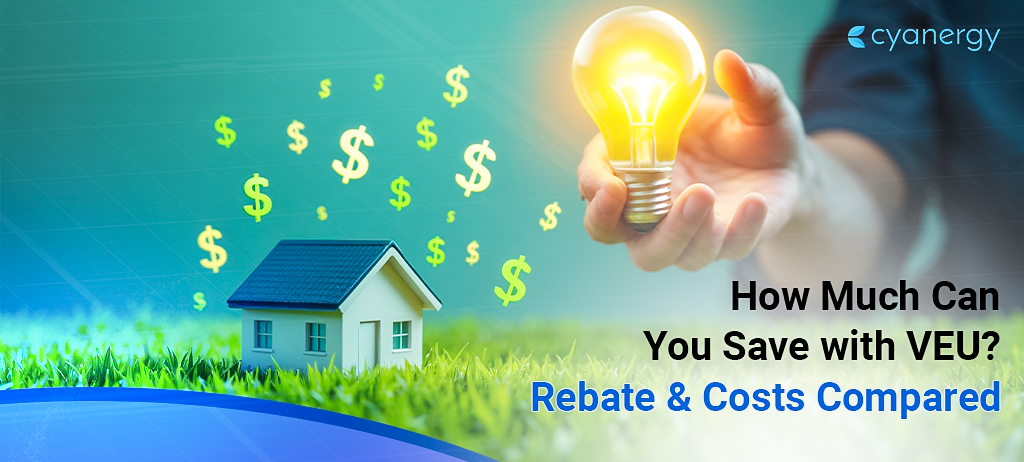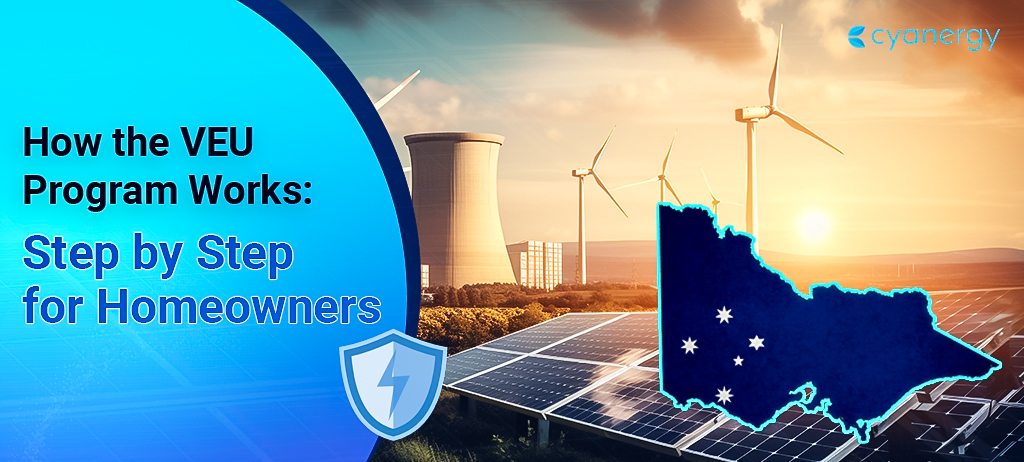Switching to electricity instead of fossil fuels is becoming a popular trend for heating and cooling. This change can improve health and air quality, help the environment, and even save money.
In recent years, the HVAC industry has been abuzz with the term “electrification.” But what does electrification mean for the future of heating and cooling?
Renewable energy is currently the fastest-growing power source in Australia. Although most homes still use fossil fuels for heating and cooling, many want to replace their HVAC systems with entirely or partly electric ones.
With the growing concerns about climate change, electrification is increasingly seen as a promising solution to reduce carbon emissions.
The advancement in technology has not only made electric appliances more affordable but also more efficient, making them an attractive choice for consumers. This shift towards electrification is a beacon of hope for a cleaner and healthier environment.
Electrification Meaning
Electrification, in simple terms, means the shift from using fossil fuels like petrol or coal to using electricity. This change can occur in various areas, including transportation, heating, and factories.
For example, it includes using electric cars instead of gas-powered ones. The goal is to use cleaner energy like wind, solar, or water power instead of fuels that pollute the environment.
Electrification isn’t just about using electricity instead of fossil fuels. It’s a significant change that helps reduce carbon emissions, improves air quality, and makes energy use more efficient and sustainable, leading to a better environment and quality of life.
It also involves bringing electricity to places that didn’t have it before or expanding its use in areas where it’s already available.
This process includes setting up power lines, installing transformers, and creating systems to deliver electricity to homes, businesses, and factories.
The aim is to provide dependable electricity so people can use electric devices and machines, which can significantly improve their daily lives.
For instance, electrification helps communities have electric lights, refrigerators, and access to information through computers and smartphones.
Electrification is not just about using electricity instead of fossil fuels. It’s a transformative change that is modernizing industries, fostering economic growth, and reducing the reliance on non-renewable energy sources that harm the environment.
This shift is a testament to the potential of electrification to create a more sustainable and prosperous future.
The Future Trends of Electrification in Australia, 2024
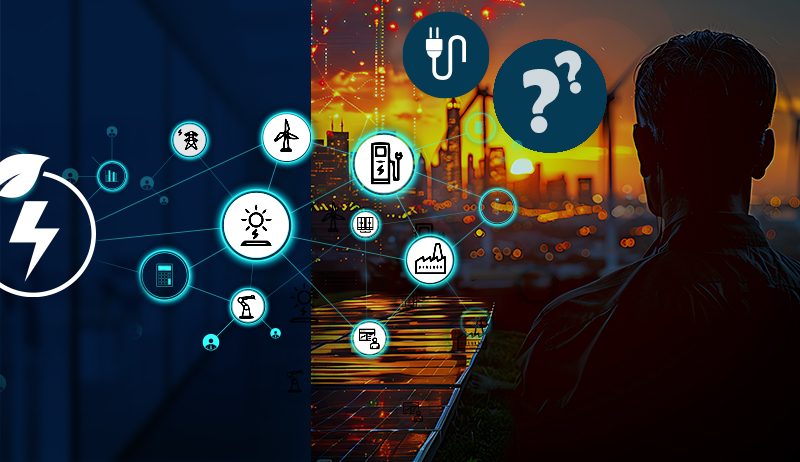
Electrification in Australia is about the country shifting from fossil fuels like coal and gas to using electricity as the primary energy source. This change is happening in transportation, homes, and industries.
Australia has relied on fossil fuels for a long time. Still, with growing worries about climate change, there’s a positive push to switch to cleaner energy like solar, wind, and hydroelectric power.
In 2024, more electric cars are on Australian roads as people move away from gasoline-powered vehicles. This is part of a more significant effort to reduce carbon emissions that cause global warming.
The government and private companies are working together to build more charging stations and improve the infrastructure needed to support electric vehicles, making it easier for people to switch.
Electrification also means using electricity instead of gas for heating, cooling, and cooking in homes and businesses.
More Australians are installing solar panels on their rooftops to produce electricity. This energy is cleaner and helps lower energy bills.
There’s also a growing trend of using electric heat pumps, which are more energy-efficient and eco-friendly for heating and cooling than traditional systems.
Industries in Australia are also embracing electrification. Factories and other large operations are using electric machinery powered by renewable energy.
This transition helps reduce Australia’s overall carbon footprint and supports the country’s goal of becoming a leader in renewable energy.
What Electrification Means for the Future of Heating & Cooling
Electrification is changing the heating and cooling systems in Australia. Instead of relying on gas or other fossil fuels, more homes and businesses are turning to electric options that are cleaner and more efficient.
People are replacing traditional gas heaters with electric heat pumps. It can both heat and cool spaces more efficiently. These pumps use less energy and are better for the environment because they can run on renewable energy sources like solar power.
As more Australians install solar panels, they can generate electricity to power these systems, reducing energy costs and reliance on the grid.
In addition, the government provides support for the transition to electric systems through a range of incentives and rebates. These can include financial assistance for purchasing electric appliances, tax credits for installing solar panels, and subsidies for energy-efficient upgrades.
Electrification makes heating and cooling in Australia more sustainable, helping to lower carbon emissions and contributing to a cleaner future.
The increasing adoption of electric systems, particularly those powered by renewable energy sources, leads to a more eco-friendly and cost-effective way to manage temperature control in homes and businesses nationwide.
By using clean, renewable energy to power these systems, we can significantly reduce our carbon footprint and contribute to a cleaner, greener future.
What is Electric Heating and Cooling Options: Sustainable Energy Solution
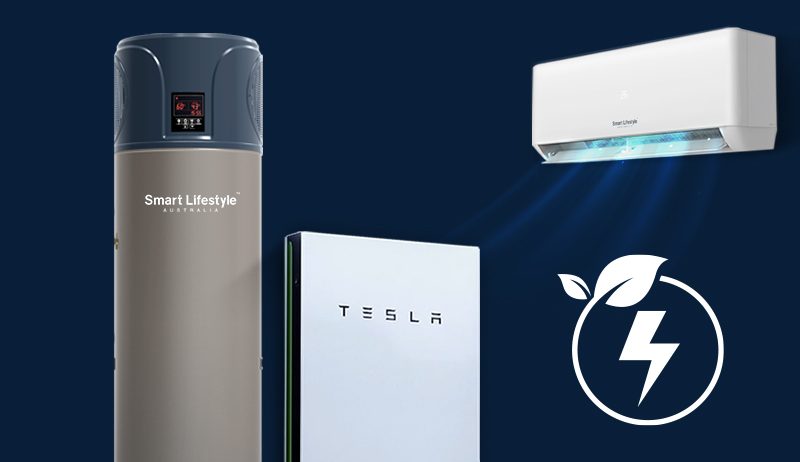
Electric Heat Pumps: A Promising Alternative
An electric heat pump is a device that can heat and cool a space. It works by transferring heat from one place to another.
In winter, it pulls heat from the outside air and brings it inside to warm the home. In summer, it does the opposite, taking heat from indoors and moving it outside to cool the space. Electric heat pumps are very efficient and save energy compared to traditional systems.
Want the best heat pump hot water system without breaking your wallet? Contact Cyanergy.
Energy Efficient Air Conditioners
An energy-efficient air conditioner is designed to use less electricity while keeping spaces cool. These air conditioners are better at maintaining a comfortable temperature without wasting energy, which helps lower electricity bills.
Our energy-efficient air conditioners can comfort you like a warm blanket or a cool sheet! Your year-round comfort is just one click away! Click here.
LED Lights: Brighten Your Space with Efficiency
Commercial Solar and Storage
Commercial solar panels capture sunlight and turn it into electricity. Businesses can use this electricity to power their operations, reducing reliance on the grid and lowering energy costs.
Some companies also use solar storage with commercial solar. Basically, batteries store extra solar energy when the sun isn’t shining. This setup allows businesses to have a steady energy supply while reducing their use of fossil fuels.
These electric solutions make heating, cooling, and lighting more sustainable, energy-efficient, and cost-effective, helping to create a cleaner and greener future.
Technological Advances and Innovations in Electrification
Recent Innovations:
Smart Grid Technology: Smart grids are advanced electricity networks that can automatically manage and balance the flow of electricity. They help better integrate renewable energy sources like solar and wind while keeping the power supply stable and efficient.
Battery Storage Solutions: New batteries store extra electricity produced on sunny or windy days for use later when energy production is lower. This ensures a steady supply of power.
Electric Vehicles (EVs) and Charging Stations: Electric cars are becoming more popular due to better battery life, faster charging, and more charging stations, making them a practical and eco-friendly choice.
Future Technologies:
Wireless Power Transmission: In the future, electricity could be transferred without wires, making it easier and cheaper to set up energy systems.
Enhanced Energy Efficiency Technologies: Future technologies will make buildings and factories use less electricity, with more efficient air conditioning systems and lighting.
AI in Grid Management: Artificial intelligence (AI) will help predict electricity needs and optimize energy use, making renewable energy more practical.
These innovations are helping us use electricity smarter, moving us closer to a clean and sustainable energy future.
Electrification is Changing the Australian Energy Game
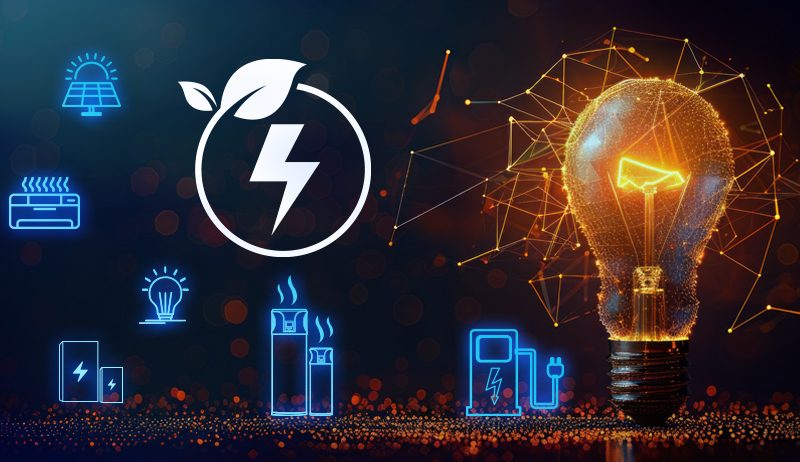
Electrification is changing how energy is used in Australia. The country is moving from fossil fuels like coal and gas to using electricity, mostly from renewable energy sources like solar and wind. This shift is happening in homes, businesses, transport, and industries.
More households are choosing electric heating and cooling systems, such as heat pumps, and installing solar panels to generate power and save money. Businesses are also adopting solar energy and storage to reduce costs and reliance on traditional power sources.
Electric vehicles are becoming more common in transportation, supported by new charging stations. This is helping to lower carbon emissions and make roads cleaner.
Industries are upgrading to electric machinery, often powered by renewables, which reduces emissions and helps Australia lead in clean energy.
Electrification pushes Australia towards a greener, more cost-effective future with cleaner air and less environmental impact.
Get all of your electrical products in one place! Contact Cyanergy today to get a free quote.

